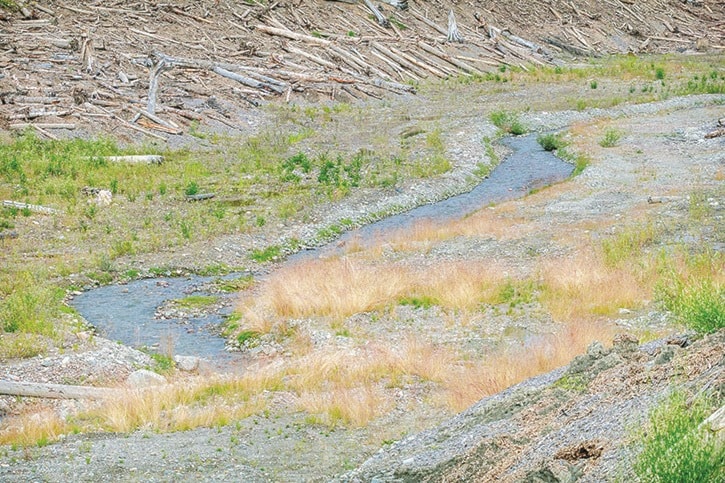Trying to remove the Mount Polley Mine breach’s deposited tailings and sediment from the bottom of Quesnel Lake would be the worst thing to do, said Imperial Metals vice-president of corporate affairs Steve Robertson.
“We do know the tailings are in a stable condition and we have heard from many experts that the worse thing that we could do is try to remove those tailings because then you would stir everything up and allow them to go into suspension,” Robertson said. “When they are deposited down on the bottom of the lake and not going anywhere it seems to be the safest position for them to be in.”
Up until recently, water monitoring in the lake where the water empties from Hazeltine Creek through diffusers was being done weekly, but due to the observation that no notable change in Quesnel Lake water could be detected, sampling has now been reduced to monthly, Robertson said.
Minnow Environmental Inc. will be in the area this week resuming some sediment testing for toxicity that has been ongoing since the breach, said Ministry of Environment director Hubert Bunce.
“We are trying to look at all the potential concerns that could occur from these materials being under the lake water, but to date we haven’t found any significant evidence of that,” Bunce said.
The mine is now running 24 hours a day, seven days a week, and tailings are being deposited into the original tailings storage facility (TSF) that breached.
Repair work to the TSF has involved buttressing along the main and perimeter embankment.
Under the present permit, the mine has to maintain a beach inside the entire perimeter of the TSF, Robertson said.
This year the mine will also begin working on restoring fish habitat in Hazeltine Creek, Bunce said.
“The first step was to conduct water cleanly from point A to point B — now they are working on the necessary habitat.”
In the Hazeltine Creek corridor, where the breach caused the suffocation of tree root systems, the company has removed the dead vegetation, he added.
“They’ve removed the tailings and fine sediments that were causing that suffocation and the next step will be to progress toward replanting of those areas.”
An outlet weir on Polley Lake controls the levels of water going into Hazeltine Creek and fish fences have been installed at the top and bottom of Hazeltine Creek to keep fish out.
“There is a healthy fish population in Polley Lake,” Bunce said, noting the fish have been tested and are safe for consumption.
Recently the company submitted a technical assessment report to the government on long-term water management.
Once the report is complete, the mine will submit an application for the long-term water management plan, Robertson said.
“We are looking forward to getting into the process of explaining the different options, their pros and cons, and hearing people’s feedback,” he said.
